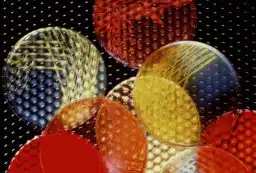Plankton poo could be the key to understanding how much carbon dioxide our oceans can store according to Tasmanian researcher Dr Karin Beaumont.
The greenhouse effect is arguably humanity’s greatest environmental threat.
“We need to understand where and how carbon dioxide is stored in the oceans. Part of the answer lies in the poo of microscopic zooplankton: does it float or does it sink?” said Karin.
“Heavy poo that sticks together and sinks to the ocean floor is good. It locks up carbon dioxide for thousands of years.”
“Other poo that breaks up and floats near the surface is not good. The carbon dioxide in this poo can be re-released to the atmosphere, adding to the Greenhouse Effect,” says Karin, who conducted her research as part of a PhD with the University of Tasmania and the Australian Antarctic Division.
Karin has discovered that the poo from the most abundant plankton floats. And she has co-authored an internet-guide to zooplankton poo.
Around 25% of carbon taken up by the oceans is currently stored in the deep-sea. “Knowing which plankton contribute to this carbon export will help us understand how changes in their abundance will influence the greenhouse effect.”
As algae grow in the oceans they take up carbon dioxide – a powerful greenhouse gas.” “Zooplankton are tiny marine animals that graze the algae and hopefully lock up this carbon dioxide in the deep ocean.”
“I found that while larger zooplankton poo transports carbon to the deep-sea, microzooplankton poo doesn’t. These microzooplankton represent around 10 times the biomass of larger zooplankton and process most of the atmospherically derived carbon. So, this finding is important for understanding how much carbon the oceans can take-up from the atmosphere.”
Karin is developing the first internet guide to zooplankton poo in collaboration with Assoc Prof Juanita Urban-Rich, University of Massachusetts, Boston, “The guide will allow researchers to identify whose poo reaches the deep-ocean and whose poo doesn’t.
This will allow us to know which plankton are the key players in keeping atmospherically derived carbon in the oceans,” she said.
This guide will be the first integrated resource of its kind in the world, with anticipated contributions by researchers from at least seven other countries.
Karin does not expect the guide to top the best-seller list! “It is a research tool for scientists that will help us build a better picture of the carbon cycle in the oceans. She hopes the guide will be published in a matter of months, subject to funding.
Karin is one of 15 Fresh Scientists presenting their research to the public for the first time thanks to Fresh Science, a national program hosted by the State Library of Victoria.




 Fresh Science is on hold for 2022. We will be back in 2023.
Fresh Science is on hold for 2022. We will be back in 2023.